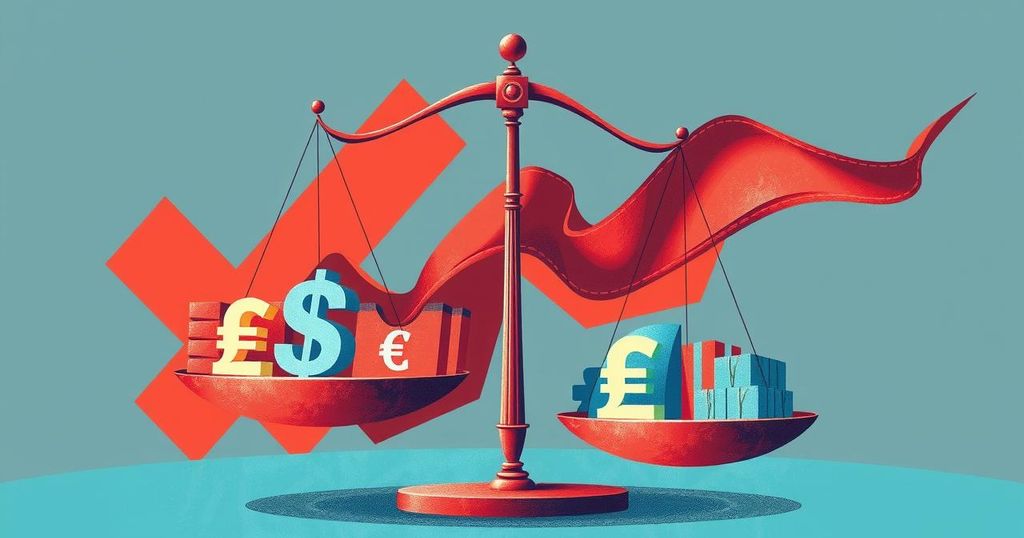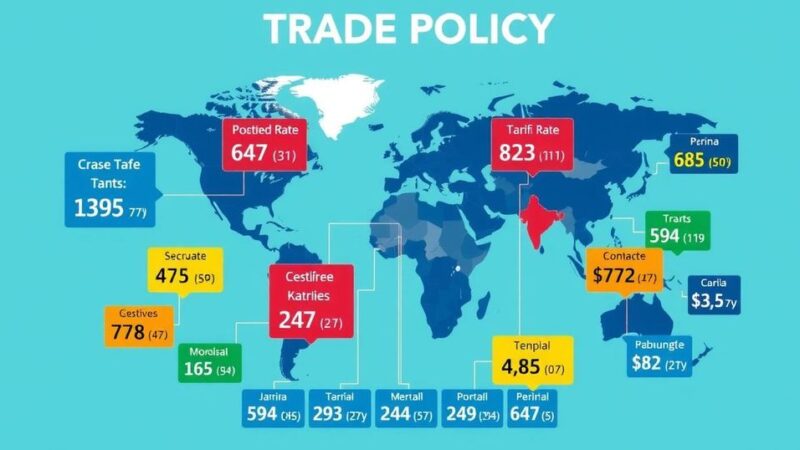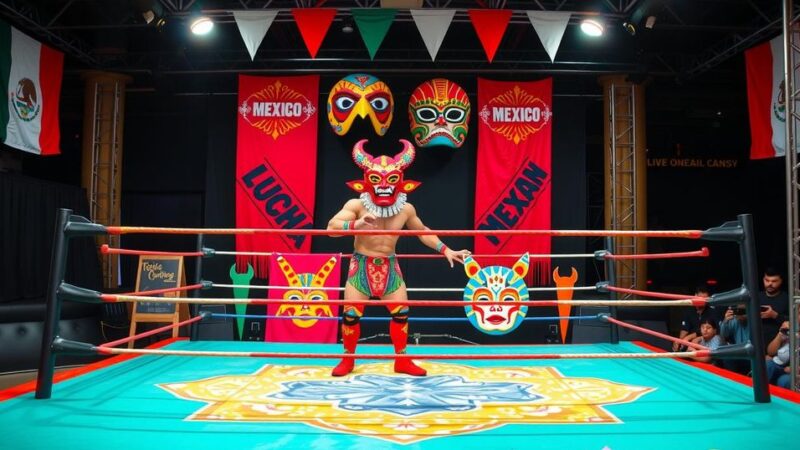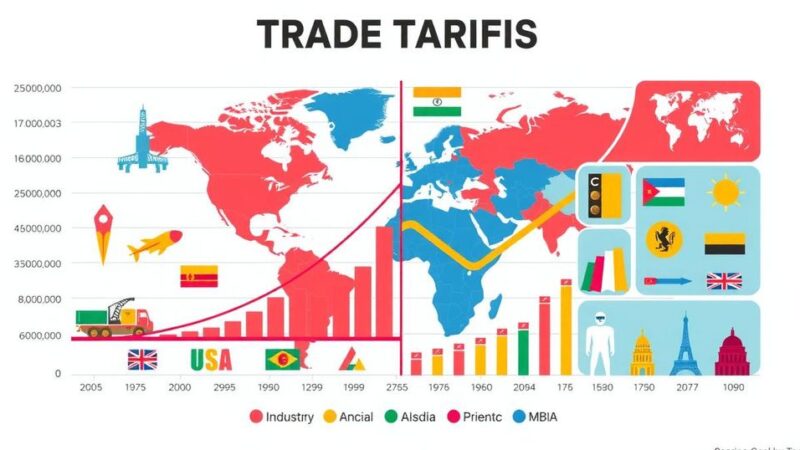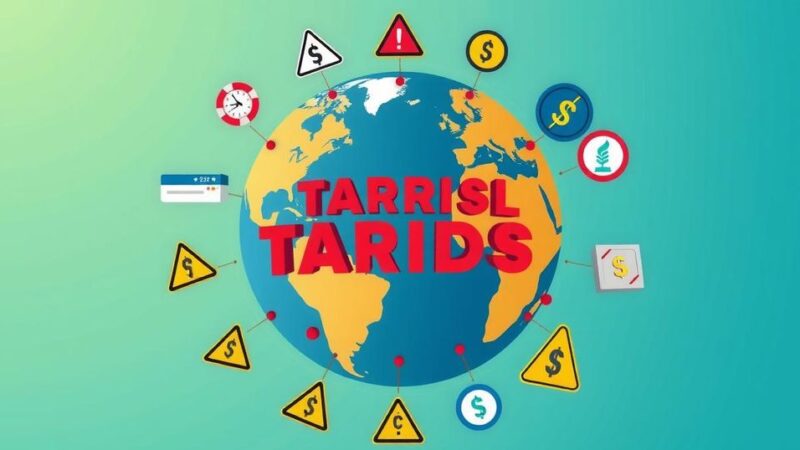President Trump has announced a 37% tariff on Bangladeshi goods, more than doubling the previous rate. This decision, part of broader U.S. tariffs on over 100 countries, poses a threat to Bangladesh’s garment industry, which heavily relies on exports to the U.S. The tariffs reflect ongoing trade tensions and economic policies seen by the administration as essential for economic liberation.
On April 3, 2025, U.S. President Donald Trump declared significant new tariffs affecting imports from over 100 countries, including a substantial 37 percent duty on Bangladeshi goods. Previously, tariffs on Bangladeshi exports averaged 15 percent, indicating an increase of more than double the original rate. This new tariff poses a significant challenge for Bangladesh, which relies heavily on the U.S. market for its ready-made garments, exporting approximately $8.4 billion worth of goods to America in 2024, predominantly in garments worth $7.34 billion.
During a press conference at the White House, President Trump characterized this initiative as a step towards what he termed the U.S.’s “Economic Liberation Day,” suggesting it was a long-awaited measure. Furthermore, a White House report highlighted that Bangladesh imposes tariffs as high as 74 percent on U.S. products, leading to the new supplementary tariff on Bangladeshi goods entering the U.S. market. This complex trade dynamic raises concerns regarding the future of Bangladesh’s garment sector and its competitiveness in the global market.
In summary, President Trump’s implementation of a 37 percent tariff on Bangladeshi goods marks a significant escalation in trade tensions between the U.S. and Bangladesh. Given that the U.S. serves as a crucial market for Bangladeshi ready-made garments, this new tariff could adversely impact the country’s garment industry, which is vital to its economy. The measures reflect broader changes in U.S. trade policy aimed at addressing existing trade imbalances.
Original Source: bdnews24.com
